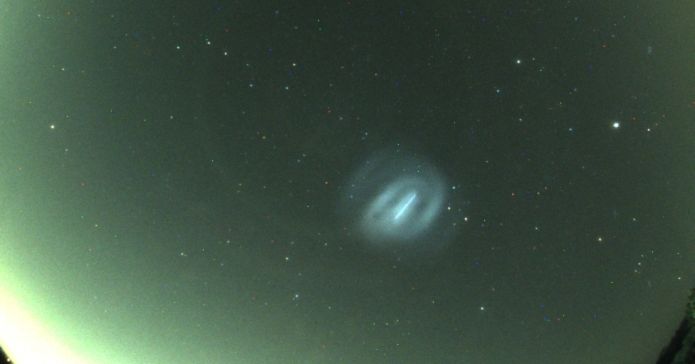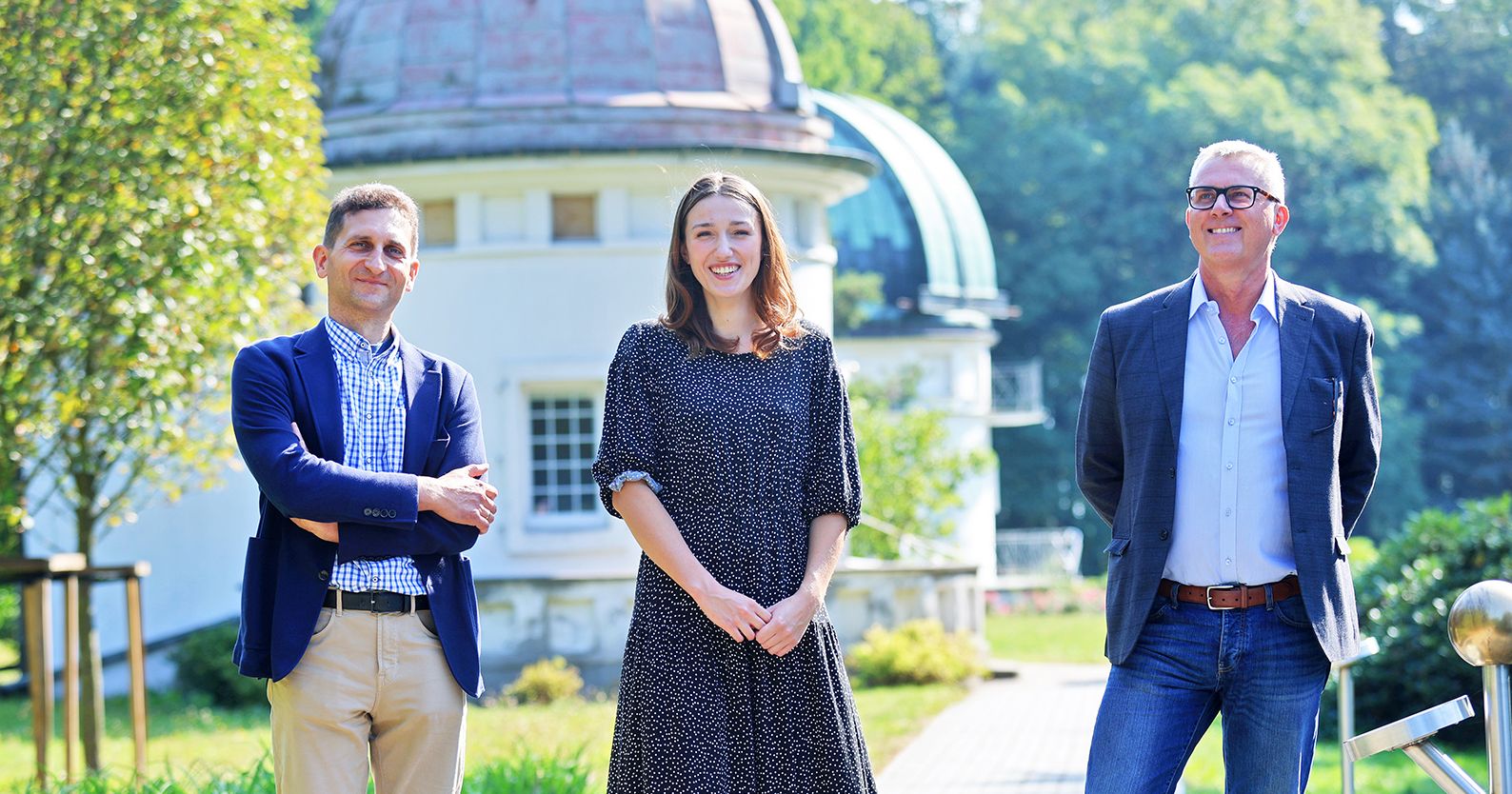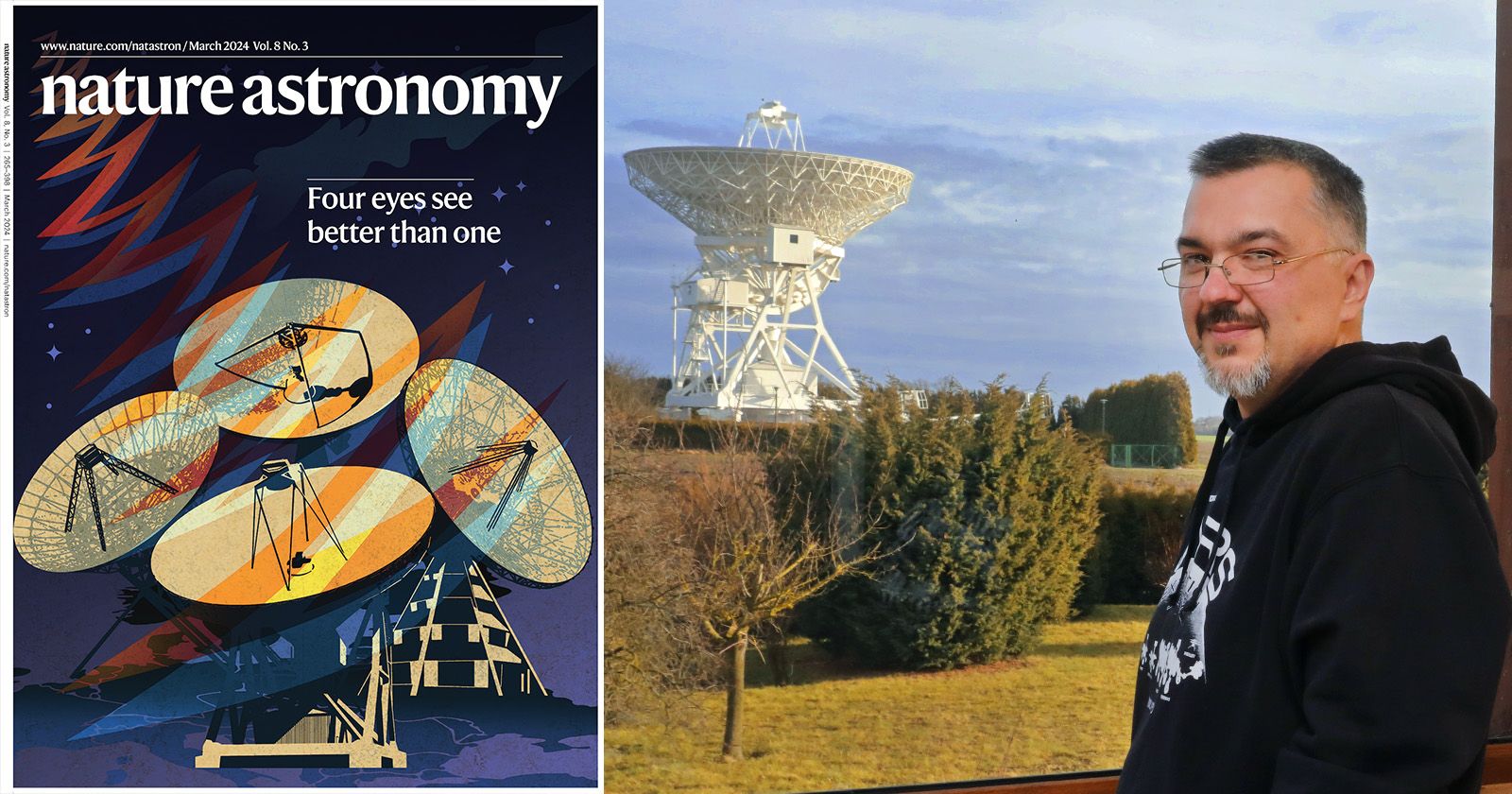 Exact sciences
Exact sciences
Spiral pattern on the sky
The ALPS (All-sky Light Pollution Survey) station located at the Nicolaus Copernicus University's Institute of Astronomy in Piwnice near Toruń has recorded an unusual event in the sky, which could be observed in Poland on 24 March after 9 pm.
The appearance of the mysterious object, forming the shape of a blue spiral trail, has been widely reported in the media for several days. As astronomers from the Nicolaus Copernicus University explain - contrary to the associations of many observers - the phenomenon, which between 9 and 9:03 pm was also recorded by cameras from the ALPS station, is not a galaxy:
The explanation for this phenomenon is simple. On Monday at 6:48 pm Polish time, the Falcon 9 rocket from the American company SpaceX was launched from Cape Canaveral, Florida, carrying a national security satellite into orbit. Due to the nature of the mission, it was not publicly announced. The rocket stage passed over Poland twice, and during its second pass, the deorbiting process began, involving a controlled fuel dump. This event was captured in the ALPS station image taken in Piwnice.
During the so-called deorbit burn, the rest of the fuel is released from the tanks to minimize the risk of leaving uncontrolled debris that could threaten to other objects in Earth's orbit. The gases released at an altitude of several hundred kilometers are illuminated by the Sun below the horizon, creating a visible trail. Under the right conditions, freezing fuel ejected from the rotating rocket forms a spectacular spiral pattern.
- This event highlights the importance of monitoring satellite and space debris trajectories and accurately determining their orbits - add scientists. - By tracking the movement of such objects, it is possible to predict and minimize potential threats to both orbital infrastructure and even objects on Earth, including the implementation of early warning systems. The Institute of Astronomy NCU has been working toward actively participating in Space Surveillance and Tracking (SST) and Space Situational Awareness (SSA) projects as part of the European Optical Network (EON).
The ALPS project is primarily designed to monitor light pollution of the night sky. Observations are conducted using automated stations placed in several locations with different levels of light pollution. This strategic placement demonstrates the significant impact of light pollution on the appearance in the night sky, as well as its effects on wildlife and human life. Additionally, ALPS stations capture various interesting celestial phenomena, such as auroras, satellite and space debris passes. The project is led by Dr. Sylwester Kołomański from the Astronomical Institute of the University of Wrocław. Nicolaus Copernicus University in Toruń is one of the partners in the project. More information about the ALPS project
 NCU News
NCU News






 Exact sciences
Exact sciences
 Exact sciences
Exact sciences

 Exact sciences
Exact sciences